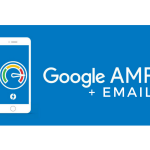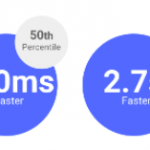Google Merges AMP Into Organic Results – Is It Time To Get On Board?
August 30, 2016

Accelerated Mobile Pages (AMP) first rolled out six months ago and Google made it clear more changes would be coming. Initially, AMP results only displayed in the ‘Top stories’ section of mobile searches and within the Google News app.
However, this is about to change as Google says AMP will display in the main stack of organic results. So how will this affect your mobile rankings and is it time to sign up to the AMP project?
Here’s what organic AMP looks like
If you’re reading this on mobile, Google has created a live demo where you can see the AMP update. Otherwise, you can get an idea of what’s ahead from this screen grab:

As you can see, the results look just like any other – aside from the AMP thunderbolt icon where you would normally see ‘mobile-friendly’.
AMP is not a ranking boost
Google said early on that there’s no ranking boost associated with AMP, although it hasn’t ruled this out from happening in the future. So at this stage there is no direct ranking boost to having your pages built with the AMP framework – that’s the key point.
Another important note is AMP will replace the regular version of the same page in mobile SERPs. There won’t be any duplicate results and AMPs don’t have any advantage over other results around them. They’ll be ranked according to how the regular version of that page performs in Google.
This means the speed boost and low-ad percentage of AMP pages have no impact on your overall ranking. However, there could be indirect boosts from lower bounce rates, more time spent on pages and more pages visited.
Is it time to sign up to AMP?
AMP certainly ticks a lot of boxes for mobile users. These pages aren’t just lighter and faster, their ads are far less obtrusive too. Sadly, things aren’t quite so clear-cut for website owners. Google knows setting up pages in AMP can be tricky – especially for existing pages that rely on heavy code.
“We want to give everyone who might be interested in ‘AMPing up’ their content enough time to learn how to implement AMP and to see how their content appears in the demo.” – Google
What Google isn’t making particularly clear is that AMP is only really designed for content publishers. So we’re talking about blog posts and news articles here, not feature-rich pages on eCommerce stores. Any of your pages running Javascript for animations, pop-ups, contact forms or anything else simply aren’t compatible with AMP at this stage.
If the traffic you generate from your blog posts is particularly valuable, then AMP is definitely worth looking at. Otherwise, you’ll have to assess how much work it takes to build AMP pages and ask whether it’s worth it.
The good news for WordPress site owners is you already have various plugins promising to make this process easier. So, if you’re excited about the idea of AMP, testing out a few pages in WordPress is a good way to introduce yourself to the technology. You may find the lack of functionality simply doesn’t work for you, but the good thing about AMP is you can take it one page at a time.
Don’t get swept up in the hype
Understandably, there’s a lot of hype around AMP right now and it’s easy to see why. The promise of lightening-fast pages and higher click-through rates is compelling stuff. However, it’s important to understand the limitations of AMP and the compromises you have to make by using it.
The majority of brands have little more to gain than speeding up their blog posts. And this is fine, but it often comes at the expense of lead-capturing techniques like email signup prompts or contact forms.
Finally, let’s make it absolutely clear you don’t need AMP to build fast web pages. Any developer can match the speed of AMP by taking it easy on the code and keeping things lightweight. The difference is you get to decide which features are essential and which ones to drop. The downside is you don’t get that snazzy lightning bolt next to your result in the mobile SERPs, of course.
Digital & Social Articles on Business 2 Community
(11)













